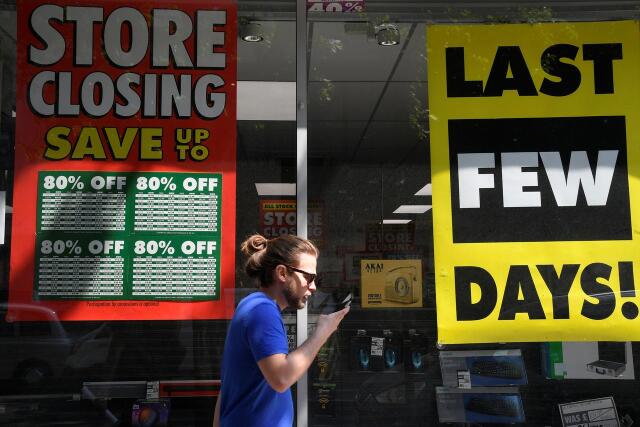The vulnerability of South Africa’s micro, small, and medium enterprises is now squarely in the spotlight.
John Dludlu
SOUTH African micro, small, and medium enterprises (MSMEs) faced a headwind of challenges even before a global pandemic blew in to shut down the economy.
The Small Business Institute (SBI) has listed many of them over the years: late payments for goods and services delivered; the tangle of bureaucratic red tape tying up businesses from every tier and agency of government (up to nine working days a month); unreliable power supply; and expensive, insufficient internet access, among others.
All have contributed to what could have been an avoidable decline in the number of active businesses and in the country’s entrepreneurial stock.
And then came Covid-19 and the obvious question, how would lockdown affect MSMEs?
The SBI, with support from Exxaro and the research team from SBP, have completed an ambitious analysis, conducted over eight weeks, of the myriad surveys, papers, master plans, discussion documents, and scenarios written during lockdown – 22 surveys and more than 160 contributions to the body of literature. More ink has been spilled about the urgency to protect and support small businesses over the last five months than in the last five years.
What we found was perhaps not surprising, but nevertheless made for extremely grim reading: it’s unlikely South Africa’s MSMEs will experience a recovery in the medium term. Many businesses may never make up the losses they incurred in lockdown; their employees may never recover from the knock to their credit records; and the loss to the fiscus in VAT and income and PAYE and corporate tax will hamper infrastructure and other projects envisioned to kick-start the economy.
The vulnerability of South Africa’s MSMEs is now squarely in the spotlight. One piece of research (using SBI’s earlier baseline work, which revealed far fewer employing formal SMMEs than estimates had reflected), suggested that 55,000 small businesses would close their doors. That’s over 20% of those formal MSMEs that provide people jobs.
We watched, in real time, as survey after survey told us that fewer and fewer small businesses expected to survive after three to six months of lockdown. And some 91% of consumers surveyed in one study were concerned about how they were able to pay their household bills; 20% of them reported having lost their jobs.
Sixty percent of these consumers had jobs in small and medium firms employing fewer than a 100 people and many of them were young. The response from both the public and private sector was mixed. Many of the regulations (under the various “alert levels” of lockdown), may have been designed to protect the nation’s health, but the extent to which they limited the ability of MSMEs to trade were often contradictory and severely damaging.
The government’s loan relief support to South African small businesses was a failure, illustrated by low uptake linked directly to the obligatory compliance measures to access government’s loan relief. Of the much talked about R200 billion credit guarantee set aside by the government for business assistance only R16bn had been lent by commercial banks despite several tweaks to make access easier.
Informal traders and township businesses who were unable to trade for months in the hard lockdown stages, were required to obtain a licence to operate from the local municipality; register with the Companies and Intellectual Property Commission, the revenue authority SA Revenue Service (Sars) and Unemployment Insurance Fund (UIF). This is time consuming and difficult to do under normal circumstances, nearly impossible in a hard lockdown.
Financial relief donated and managed by the NGO and private sector were comparatively more successful. Pro-poor developmental micro-finance groups have collectively provided 184 000 loans since April, worth R733.6 million. About 97% of the loans were disbursed to rural-based informal and micro enterprises, with the balance of 3% going to township entrepreneurs.
The Sukuma Relief Programme and SA Future Trust, seeded with donations of R1bn each from the Rupert and Oppenheimer families, provided both non-payable survival grants and soft loans. Their “pay it forward” formula will ensure that the loans repaid by small businesses will, in turn, provide funds for other SMEs in need of financing.
Since all clouds have silver linings, the one we identified was linked to creative adoption of technology. SA consumers buying online increased by 37%, according to Nielsen. Undoubtedly digital shopping would surely have been higher had there been no regulations generally prohibiting the sale of certain items and e-commerce specifically.
Rand Merchant Bank estimates there are now around 5,000 businesses online in South Africa with a turnover of R100,000 or more and expects e-commerce to grow by 150% and be worth R225bn in South Africa by 2025. And the UN’s digital marketplace explorer ranks South Africa number one in digital marketplaces on the continent with over 100. Some 652 million people visit the shopping platforms a year. There are clever examples of businesses using basic services available to anyone with a smartphone in new ways, as well as new app development and business ideas that allowed many MSMEs to survive as they pivoted to a different business model.
Henceforth, we’ll also be considering the push for formalisation through a new lens and the idea of “localisation” by examining what Covid-19 and previously existing, systemic challenges mean on the ground for SMMEs in two districts – one in the Free State and one in Mpumalanga.
And finally, we will identify the activities, barriers, or mindsets that were holding small businesses back. Ultimately, SBI’s research will provide recommendations to support small businesses, whether formal or informal, to rebound and grow, ensuring greater economic activity and money flowing into the economy.
* John Dludlu is the CEO at the Small Business Institute








